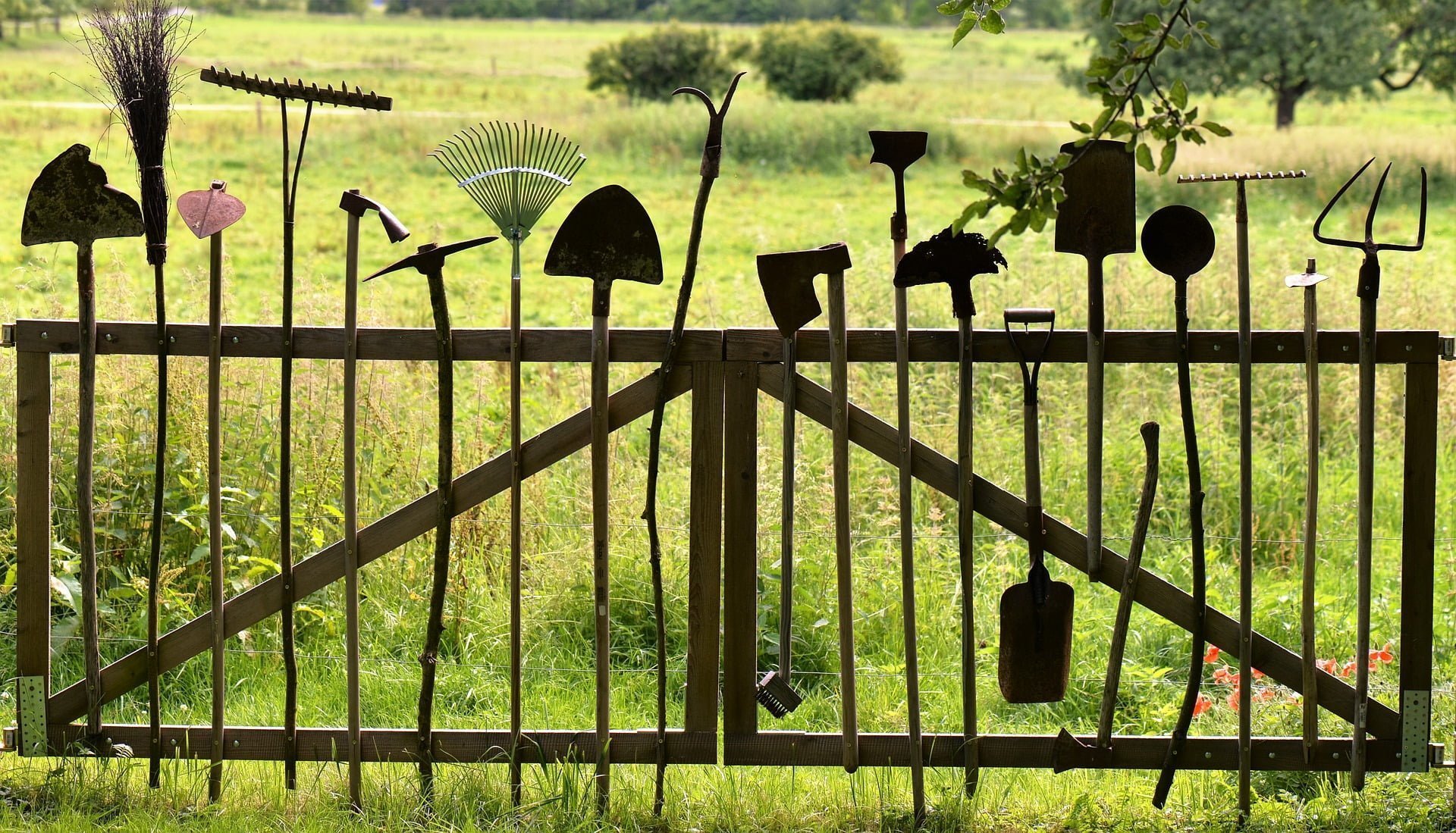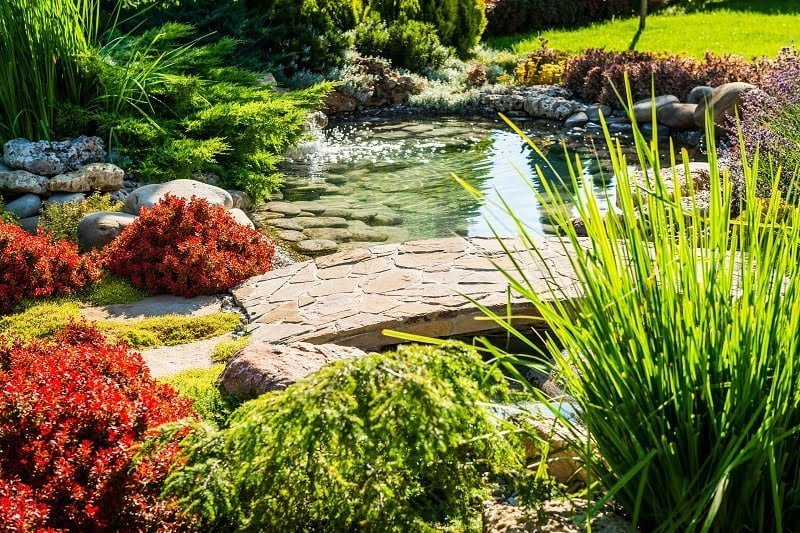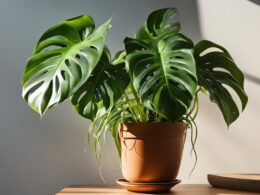Are you a bamboo lover looking to keep your plants healthy and thriving? It’s crucial to understand how often you should water your bamboo to ensure its well-being. Knowing the watering needs of different bamboo species, considering the climate and environment, and checking the moisture levels of the soil are all essential factors to consider.
Additionally, observing the growth and health of your bamboo will give you valuable insight into its hydration requirements. Whether you have indoor or outdoor bamboo, there are specific watering techniques you should follow. Overwatering or underwatering can be detrimental to your plant’s health, so it’s important to recognize the signs of both.
In this article, we will provide you with tips for establishing a proper watering schedule and maintenance routine for your bamboo, ensuring that you keep your beloved plants safe and thriving.
Quick Summary
- Running bamboo generally needs more water than clumping bamboo.
- Regularly check soil moisture and adjust watering based on climate, environment, sun exposure, and wind.
- Indoor bamboo should be watered once a week, while outdoor bamboo should be watered deeply with frequency adjusted based on climate and weather.
- Avoid overwatering or underwatering to prevent negative effects on bamboo growth.
Understand the Watering Needs of Different Bamboo Species
When it comes to watering bamboo, it’s important to understand the unique watering needs of different bamboo species. Watering frequency is a crucial factor in maintaining the health and vibrancy of your bamboo plants.
You should water your bamboo regularly, but not excessively, as overwatering can lead to root rot and other issues. The watering frequency will depend on various factors such as the species of bamboo, the climate, and the soil conditions.
Some bamboo species require more water than others. For example, running bamboo, which spreads quickly, generally needs more water than clumping bamboo, which grows in tight clusters. Running bamboo species should be watered more frequently to support their rapid growth. On the other hand, clumping bamboo species can typically withstand drier conditions and require less frequent watering.
When watering your bamboo, it’s important to use the right watering methods. A deep watering is recommended to encourage deep root growth and ensure that the water reaches the entire root system. Avoid shallow watering, as it can cause the roots to stay near the surface, making the plant more susceptible to drought damage.
Understanding the watering needs of different bamboo species is vital for maintaining the health and vitality of your plants. Remember to water your bamboo regularly, but not excessively, and use the appropriate watering methods to promote deep root growth. By following these guidelines, you can ensure the safety and longevity of your bamboo plants.
Consider the Climate and Environment
In determining the appropriate watering schedule for your bamboo, take into account the climate and environment to create an idyllic habitat. Watering frequency is crucial for the health and growth of your bamboo, and it varies depending on the climate and environment it’s in.
Here are some best watering practices to consider:
-
Monitor the soil moisture: Check the moisture level of the soil regularly to ensure it isn’t too dry or waterlogged. Stick your finger about an inch into the soil, and if it feels dry, it’s time to water.
-
Adjust watering based on climate: In hot and dry climates, bamboo may need more frequent watering to prevent dehydration. On the other hand, in cooler and humid climates, watering can be less frequent.
-
Consider the environment: Factors such as sun exposure and wind can affect the water needs of your bamboo. If your bamboo is exposed to direct sunlight or strong winds, it may require more water to stay hydrated.
Maintaining a consistent watering schedule, tailored to your bamboo’s specific needs, is essential for its overall health and vitality. By considering the climate and environment, you can ensure that your bamboo thrives in its surroundings. Remember, providing adequate water is crucial, but overwatering can be detrimental to the plant’s health. So, water wisely and enjoy the beauty of your bamboo in its idyllic habitat.
Take Note of the Size of the Bamboo Pot
To create an ideal habitat for your bamboo, it’s crucial to ensure that the size of the pot matches its growth. The size of the pot directly affects how often you should water the bamboo. If the pot is too small, the bamboo may become root-bound and suffer from lack of water. On the other hand, if the pot is too large, excess water may accumulate and cause root rot. Finding the right balance is key for the health and well-being of your bamboo.
When it comes to bamboo pot size, consider the size of the plant and its roots. As the bamboo grows, it will need more space for its roots to expand and absorb water. If you notice the roots growing out of the drainage holes or circling around the pot, it’s time to repot your bamboo into a larger container. This will allow the roots to spread out and prevent them from becoming cramped.
In terms of watering frequency, it’s important to strike a balance. Water your bamboo enough to keep the soil consistently moist, but not soggy. Overwatering can lead to root rot and other issues. As a general rule of thumb, check the moisture level of the soil regularly by sticking your finger about an inch deep. If it feels dry, it’s time to water. Remember, every bamboo is unique, so observe your plant closely and adjust the watering frequency as needed.
By choosing the right pot size and watering frequency, you can provide a safe and comfortable environment for your bamboo to thrive. Take the time to understand the needs of your bamboo, and you’ll be rewarded with a healthy and vibrant plant.
Check the Moisture Levels of the Soil
Make sure you keep an eye on the moisture levels of the soil to ensure your bamboo is thriving in its ideal habitat. Monitoring soil moisture is crucial in maintaining the health and well-being of your bamboo plant.
Watering your bamboo too much or too little can have negative effects on its growth and overall health. To make sure you’re providing the right amount of water, you can use moisture meters. These handy tools will help you accurately measure the moisture levels of the soil.
By inserting the probe into the soil, you can easily determine if it’s too dry or too wet. This will prevent you from overwatering or underwatering your bamboo, which can lead to root rot or dehydration. Remember, bamboo plants prefer moist soil, but not waterlogged conditions.
So, it’s important to regularly check the moisture levels and adjust your watering schedule accordingly. By using moisture meters and keeping a close eye on the soil moisture, you can ensure that your bamboo remains healthy and thriving in its ideal habitat.
Observe the Growth and Health of the Bamboo
Keep a close eye on how your bamboo is growing and thriving to ensure its health and well-being. Observing techniques can help you determine if your bamboo is getting enough water.
One way to observe the health of your bamboo is by checking its leaves. If the leaves are yellowing or wilting, it may be a sign that your bamboo needs more water. On the other hand, if the leaves are overly green and the stems are becoming yellow, it could indicate overwatering.
Another observation technique is to look at the bamboo’s growth rate. If your bamboo is growing slowly or not at all, it may be a sign that it needs more water. However, if it is growing too quickly, it could mean that it is being overwatered.
In terms of watering frequency, it’s generally recommended to water bamboo once or twice a week. However, this can vary depending on factors such as climate and soil type.
It’s important to strike a balance and avoid both underwatering and overwatering your bamboo to ensure its overall health and longevity.
What Is the Proper Watering Schedule for Forsythia Plants?
When it comes to maintaining healthy forsythia plants, it is essential to understand the proper watering frequency for forsythia. These vibrant shrubs thrive in moist soil but can also tolerate drought conditions. Watering them deeply once a week during dry spells is generally recommended. However, monitor the soil moisture level to adjust the frequency accordingly and ensure the roots stay hydrated without becoming waterlogged.
Watering Techniques for Indoor and Outdoor Bamboo
Ensure that your indoor and outdoor bamboo stays hydrated by using effective watering techniques. Watering frequency is an important factor to consider when it comes to maintaining the health of your bamboo plants.
For indoor bamboo, it’s generally recommended to water them once every week. However, you should always check the soil moisture level before watering to avoid overwatering. Stick your finger about an inch into the soil, and if it feels dry, then it’s time to water.
When watering your indoor bamboo, use a watering can or a spray bottle to gently water the soil until it’s evenly moist. Avoid pouring water directly onto the leaves as it can lead to fungal diseases.
For outdoor bamboo, the watering frequency may vary depending on the climate and weather conditions. During hot and dry weather, you may need to water your bamboo more frequently, while during cooler months, you can reduce the frequency. It’s important to water deeply, allowing the water to penetrate the root zone.
To water outdoor bamboo, you can use a garden hose or a watering can with a gentle spray nozzle. Water the soil around the base of the plant, making sure to cover the entire root ball. Avoid overhead watering, as it can increase the risk of fungal diseases.
By following these watering methods, you can ensure that your indoor and outdoor bamboo plants receive the right amount of water to stay healthy and vibrant.
Signs of Overwatering and Underwatering
Watch out for signs of overwatering and underwatering in your bamboo plants to maintain their health and prevent potential damage. Proper watering is crucial for the well-being of your bamboo, as both overwatering and underwatering can be detrimental to its growth.
To prevent underwatering, make sure to regularly check the soil moisture level by sticking your finger about an inch into the soil. If it feels dry at that depth, it’s time to water. Additionally, observe the bamboo plant for any signs of wilting or drooping leaves, which could indicate that it needs more water.
On the other hand, overwatering can lead to root rot and other issues. One common symptom of overwatering is yellowing leaves that are soft and mushy to the touch. If you notice these signs, it’s important to adjust your watering routine. Reduce the frequency of watering and allow the soil to dry out between each watering session. This will give the roots a chance to breathe and prevent them from becoming waterlogged.
Remember, maintaining the proper moisture balance is key to the health of your bamboo plants. By being vigilant and watching for signs of overwatering and underwatering, you can ensure that your bamboo thrives and remains a beautiful addition to your indoor or outdoor space.
Tips for Proper Watering Schedule and Maintenance
Now that you understand the signs of overwatering and underwatering, let’s talk about some tips for maintaining a proper watering schedule for your bamboo plants.
Proper watering techniques are essential to ensure the health and longevity of your bamboo. First and foremost, it’s important to remember that bamboo prefers moist soil but not waterlogged conditions. To prevent root rot, which is one of the main concerns when it comes to watering bamboo, make sure to water your plants deeply and infrequently. This means giving them a thorough watering and then allowing the soil to dry out slightly before watering again.
To determine if your bamboo needs water, simply stick your finger about an inch into the soil. If it feels dry, it’s time to water. It’s also a good idea to monitor the weather and adjust your watering schedule accordingly. During hot and dry periods, your bamboo may require more frequent watering.
Remember, overwatering can be just as detrimental to your bamboo as underwatering. By following these proper watering techniques, you can prevent root rot and keep your bamboo thriving. So, take the time to establish a regular watering schedule and give your bamboo the care it deserves.
Frequently Asked Questions
Can I water all bamboo species the same way?
Watering techniques and frequency can vary for different bamboo species. It’s important to research the specific needs of your bamboo to ensure you provide the right amount of water.
How does the climate and environment affect the watering needs of bamboo?
The climate and environment play a crucial role in determining how often you should water bamboo. Factors like temperature, humidity, and sunlight affect the plant’s water needs, so it’s important to adjust your watering frequency accordingly to ensure its health and safety.
Should I choose a different size pot for different types of bamboo?
Choose a pot size based on the type of bamboo. Use larger pots for running bamboo and smaller pots for clumping bamboo. Opt for pots with good drainage to prevent overwatering and root rot.
How do I check the moisture levels of the soil for bamboo?
To check the moisture levels of the soil for bamboo, use a moisture meter. Make sure the meter is accurate and follow the instructions. This will help ensure the safety of your bamboo plants.
What are some signs that indicate overwatering or underwatering in bamboo plants?
To properly water bamboo plants, pay attention to signs of overwatering or underwatering. Overwatering can cause yellowing leaves and root rot, while underwatering leads to dry and droopy leaves. Adjust watering accordingly to maintain plant health and safety.
Conclusion
In conclusion, when it comes to watering bamboo, it’s important to understand the specific needs of the species and consider the climate and environment.
Additionally, the size of the pot and the moisture levels of the soil should be taken into account. By observing the growth and health of the bamboo and using proper watering techniques, you can ensure its well-being.
It’s also crucial to be aware of the signs of overwatering and underwatering. Following these tips will help you establish a proper watering schedule and maintain your bamboo effectively.









